
The United States spends more per capita on health care than any other country, yet health outcomes lag behind many other developed nations. Not all Americans have the same access to quality care, and disadvantaged citizens are often the ones left behinds. The disparity in health care could partly explain why life expectancy varies by nearly 10 years across U.S. metropolitan areas.
Even among metropolitan areas within the same state, health outcomes can differ dramatically. In California’s healthiest metropolitan area, San Jose-Sunnyvale-Santa Clara, the life expectancy at birth is 82.7 years. However, there are four California cities with a life expectancy more than five years shorter.
To determine the healthiest city in every state, 24/7 Wall St. reviewed several factors such as healthy behavior, clinical care, social and economic conditions, and the physical environment of residents in all U.S. metro areas. We constructed an index out of these factors that can capture the health of a city’s residents.
Click here to see the healthiest city in every state.
One of the most important measures of a city’s health is the rate at which members of the population die prematurely. This rate is a common method used to quantify the amount of preventable deaths in an area by measuring the number of deaths among residents younger than 75 years old. The premature death rate in all 50 cities on this list is lower than the national rate. The San Jose-Sunnyvale-Santa Clara metro area has the lowest rate in the nation at 200 preventable deaths per 100,000 residents, which is well less than half of the preventable deaths of the nation as a whole.
While the healthiest city in every state tends to have better health outcomes than the nation overall, occasionally one of these cities ranks exceptionally low nationwide. For example, Mississippi as a whole has some of the worst health outcomes in the country, including the highest rate of preventable deaths of any state. While Gulfport-Biloxi-Pascagoula is the healthiest metro area in Mississippi, it is still among the least healthy cities in the nation.
Many behavioral factors affect a population’s health, with smoking and obesity rates among the most significant. Higher rates of both increase the risk of many preventable diseases and ultimately cause an increase in premature deaths. Because the healthiest metros tend to have lower smoking and obesity rates, it is unsurprising to find their residents tend to live longer than their statewide peers.
In addition to healthy behaviors, social and economic conditions in an area affect how healthy residents tend to be. Adequate health care may be too expensive for low-income or unemployed residents. Quality care can still be more expensive still. Consequently, most healthy cities also tend to be wealthier. Unemployment rates are lower than the country in all but 12 of the 50 cities on this list. Also, in the majority of these cities, median household incomes are higher than the national median income.
To identify the healthiest city in every state, 24/7 Wall St. created an index modelled after an analysis conducted by County Health Rankings & Roadmaps, a Robert Wood Johnson Foundation and University of Wisconsin Population Health Institute joint program. The index rankings are based on overall health outcomes, a weighted composite of length of life, quality of life, and overall health factors. The health factors component is itself a weighted composite of healthy behaviors, clinical care, social and economic factors, and physical environment measures. All data used are for the most recent available year. The index was used to compare all U.S. metropolitan statistical areas as defined by the U.S. Census Bureau. Four states — Delaware, New Hampshire, Rhode Island, Vermont — have only one metropolitan statistical area. In these states, the sole metro area is listed by default.

1. Daphne-Fairhope-Foley, Alabama
> Premature death rate: 356.0 (per 100,000 residents)
> Adult obesity rate: 26.7%
> Adults without health insurance: 14.8%
> Median household income: $50,183

2. Fairbanks, Alaska
> Premature death rate: 302.7 (per 100,000 residents)
> Adult obesity rate: 28.6%
> Adults without health insurance: 11.7%
> Median household income: $70,408

3. Phoenix-Mesa-Scottsdale, Arizona
> Premature death rate: 295.9 (per 100,000 residents)
> Adult obesity rate: 22.9%
> Adults without health insurance: 13.3%
> Median household income: $53,310

4. Fayetteville-Springdale-Rogers, Arkansas
> Premature death rate: 355.5 (per 100,000 residents)
> Adult obesity rate: 28.9%
> Adults without health insurance: 13.5%
> Median household income: $48,627
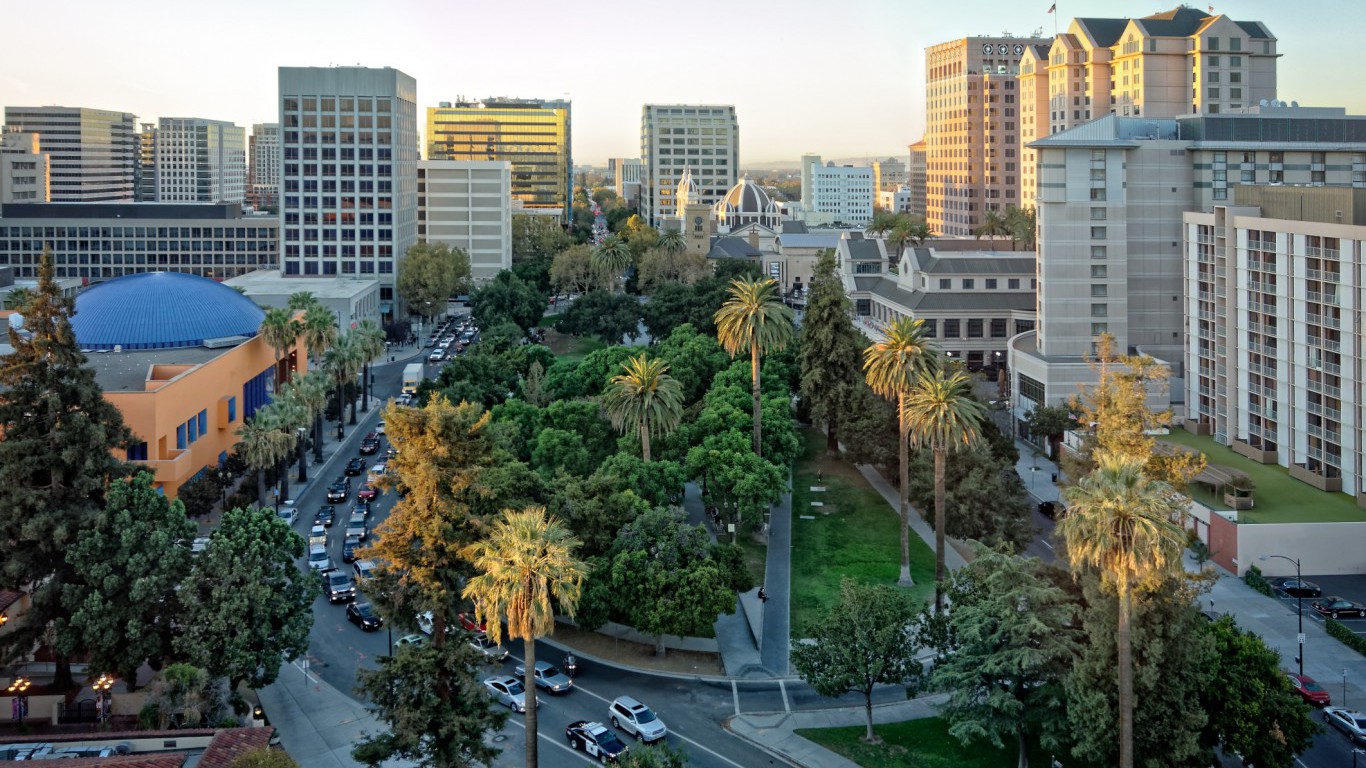
5. San Jose-Sunnyvale-Santa Clara, California
> Premature death rate: 200.6 (per 100,000 residents)
> Adult obesity rate: 19.6%
> Adults without health insurance: 7.1%
> Median household income: $92,960
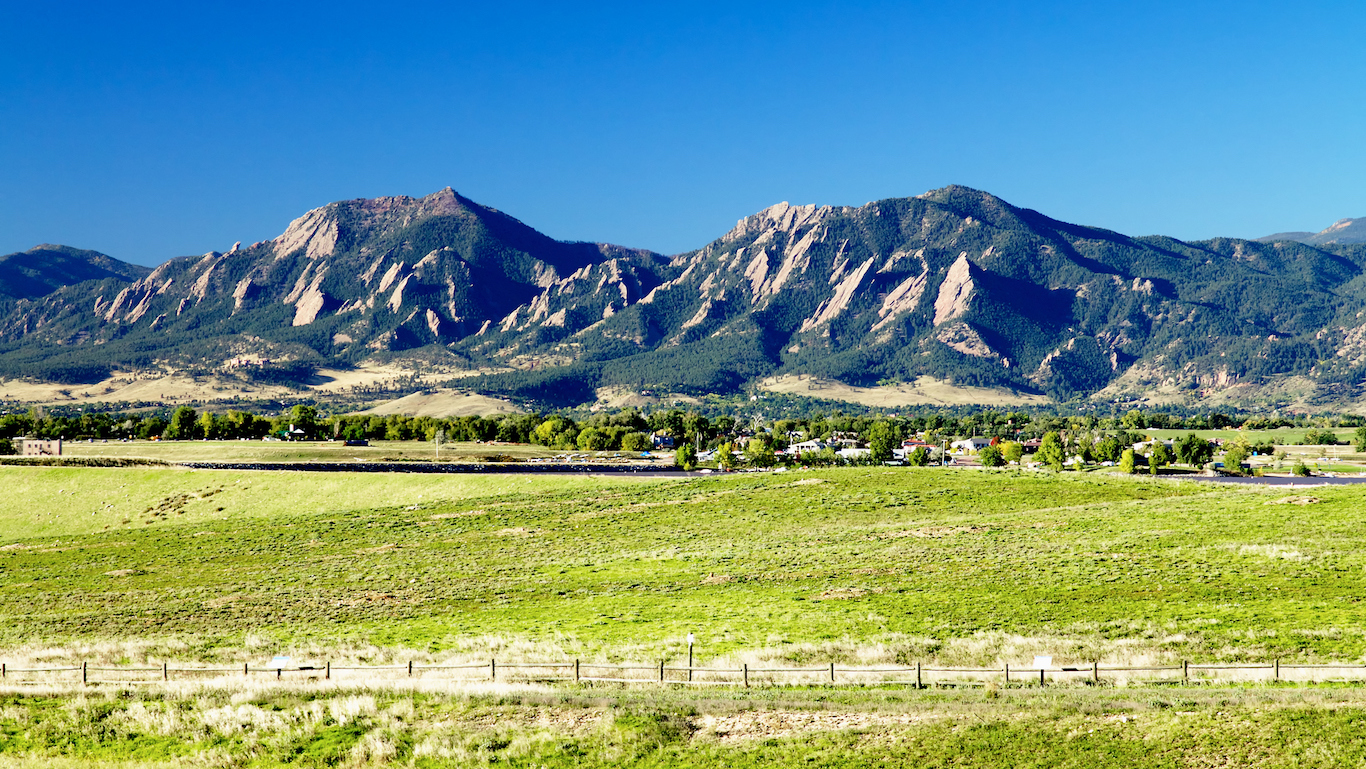
6. Boulder, Colorado
> Premature death rate: 209.0 (per 100,000 residents)
> Adult obesity rate: 13.3%
> Adults without health insurance: 7.3%
> Median household income: $69,407
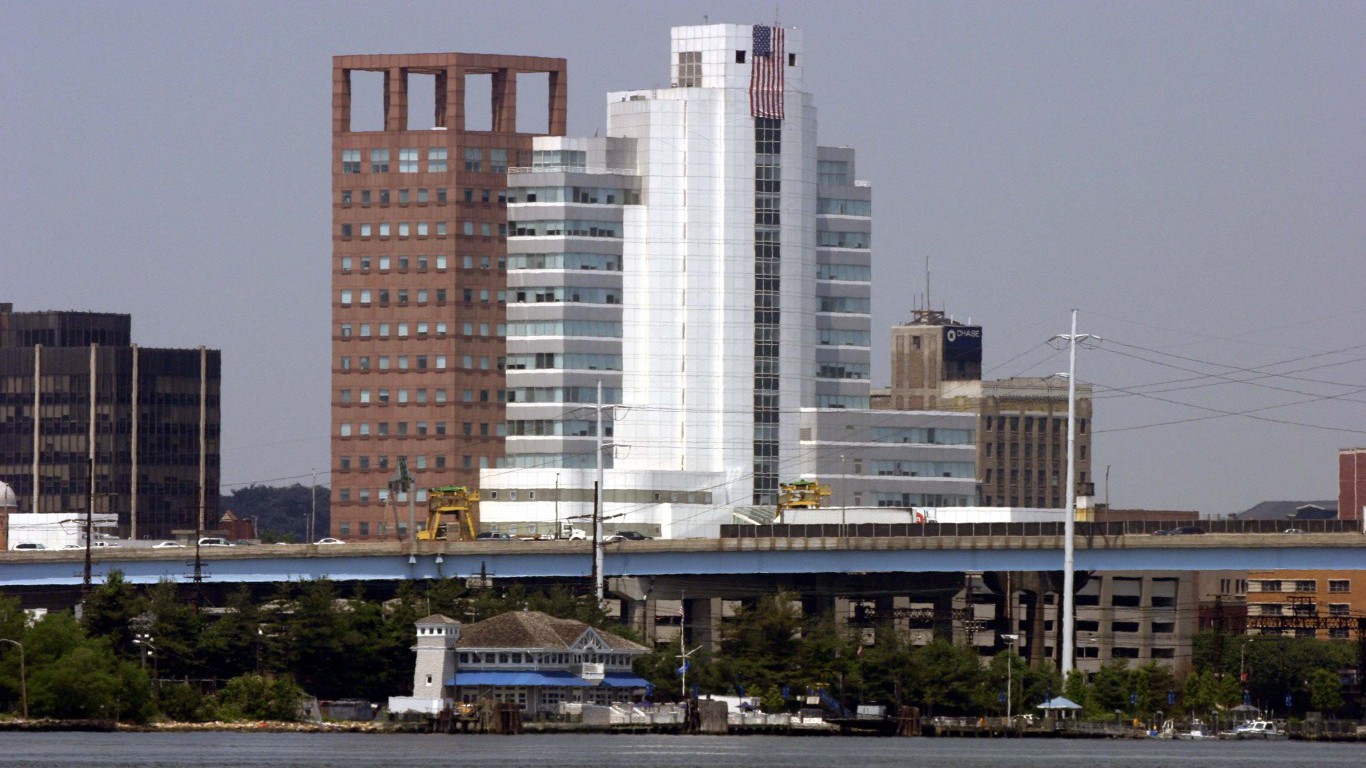
7. Bridgeport-Stamford-Norwalk, Connecticut
> Premature death rate: 223.5 (per 100,000 residents)
> Adult obesity rate: 20.8%
> Adults without health insurance: 10.1%
> Median household income: $83,163
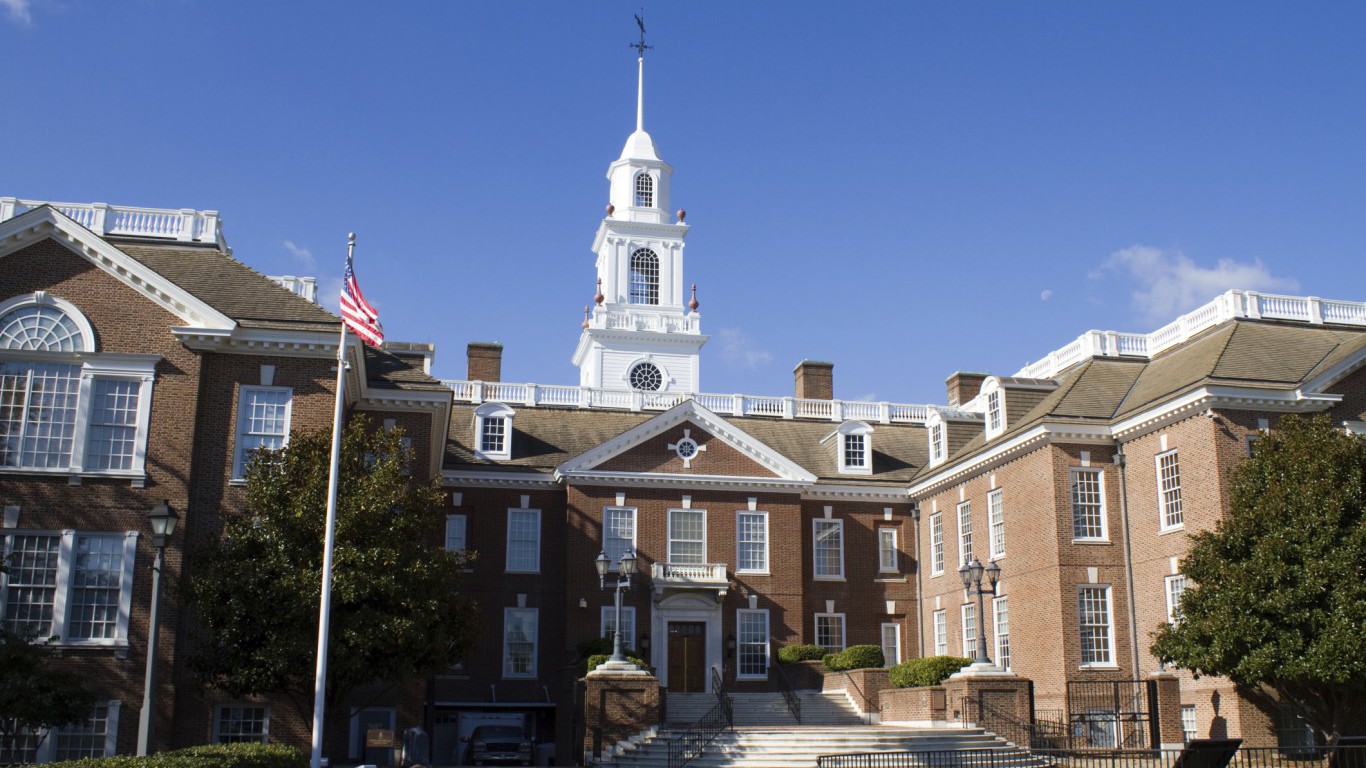
8. Dover, Delaware
> Premature death rate: 379.0 (per 100,000 residents)
> Adult obesity rate: 33.2%
> Adults without health insurance: 7.4%
> Median household income: $55,169
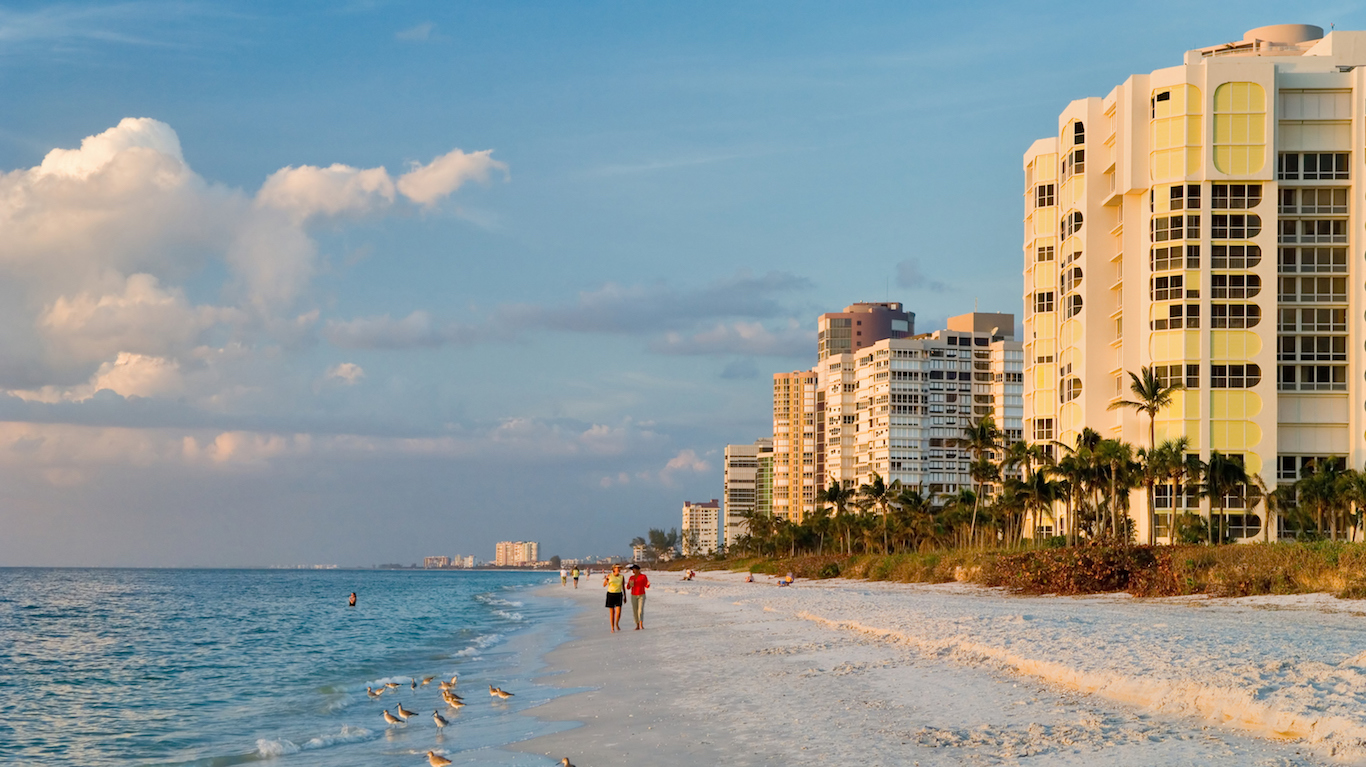
9. Naples-Immokalee-Marco Island, Florida
> Premature death rate: 230.7 (per 100,000 residents)
> Adult obesity rate: 18.8%
> Adults without health insurance: 18.7%
> Median household income: $56,250

10. Gainesville, Georgia
> Premature death rate: 330.6 (per 100,000 residents)
> Adult obesity rate: 25.7%
> Adults without health insurance: 17.6%
> Median household income: $51,036
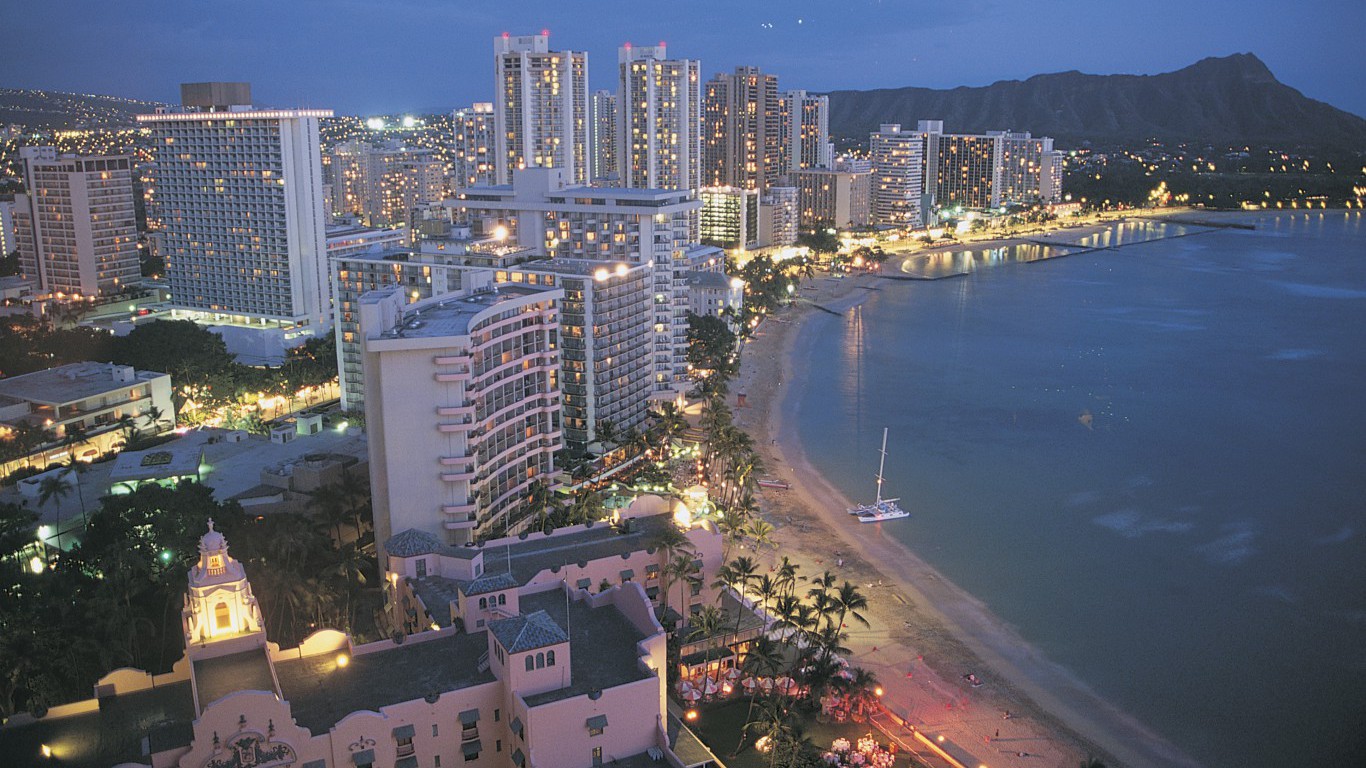
11. Urban Honolulu, Hawaii
> Premature death rate: 271.2 (per 100,000 residents)
> Adult obesity rate: 21.9%
> Adults without health insurance: 4.7%
> Median household income: $73,581

12. Boise City, Idaho
> Premature death rate: 287.3 (per 100,000 residents)
> Adult obesity rate: 26.8%
> Adults without health insurance: 12.6%
> Median household income: $50,776
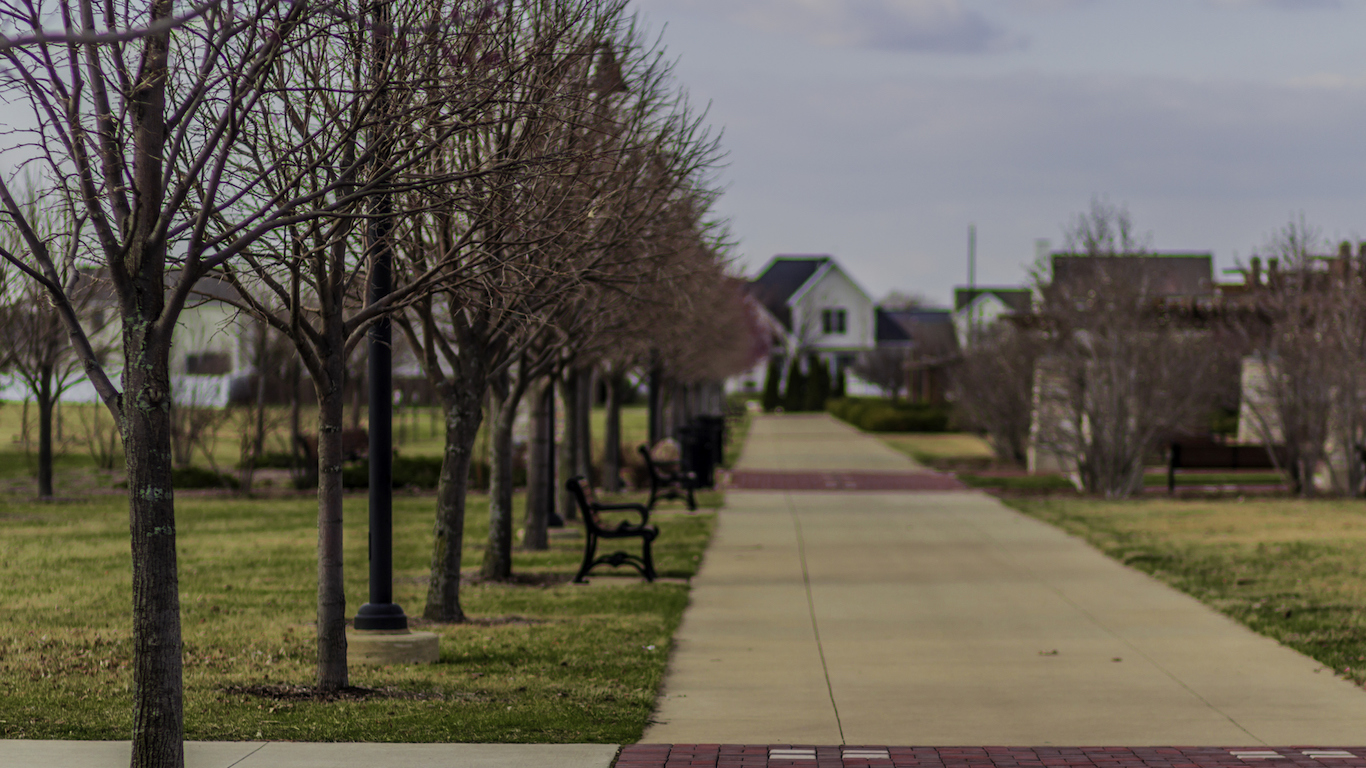
13. Bloomington, Illinois
> Premature death rate: 292.0 (per 100,000 residents)
> Adult obesity rate: 29.3%
> Adults without health insurance: 4.9%
> Median household income: $61,173
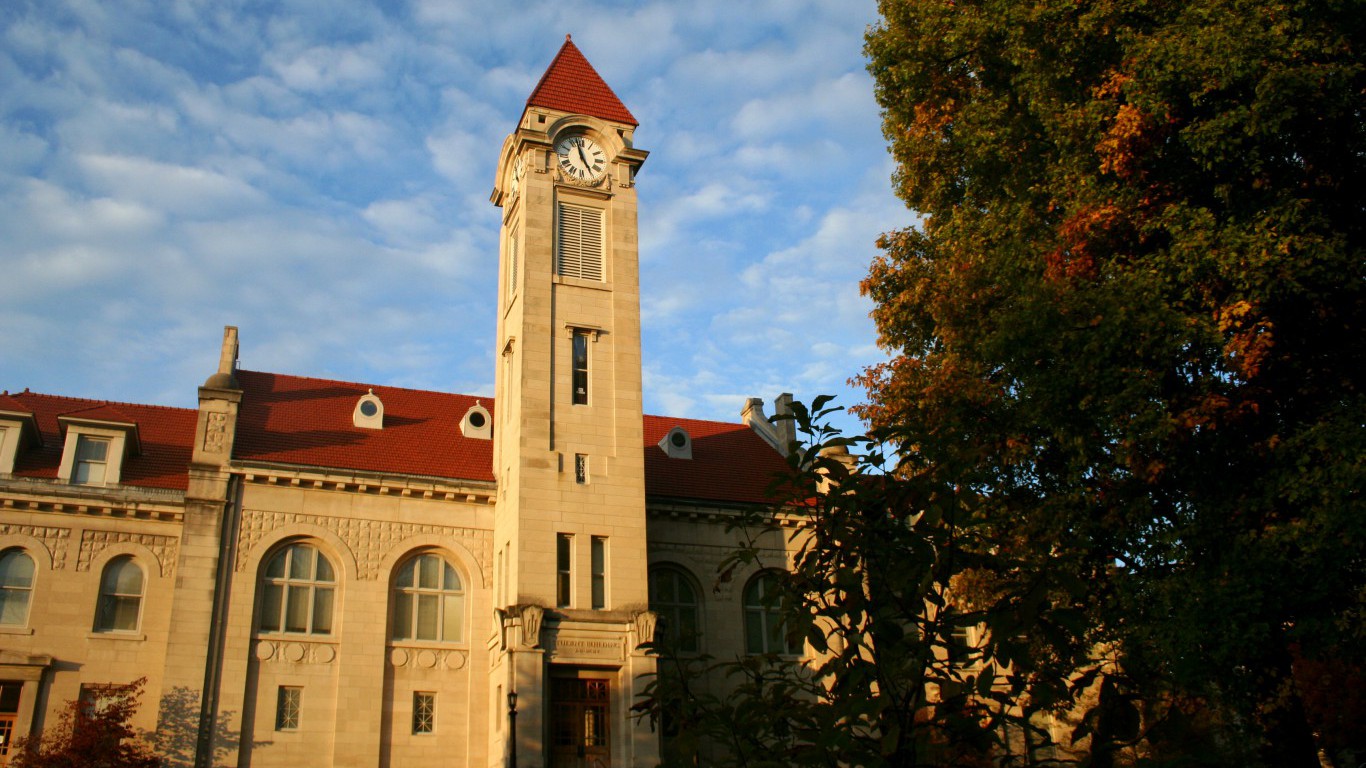
14. Bloomington, Indiana
> Premature death rate: 324.8 (per 100,000 residents)
> Adult obesity rate: 22.5%
> Adults without health insurance: 10.2%
> Median household income: $42,416
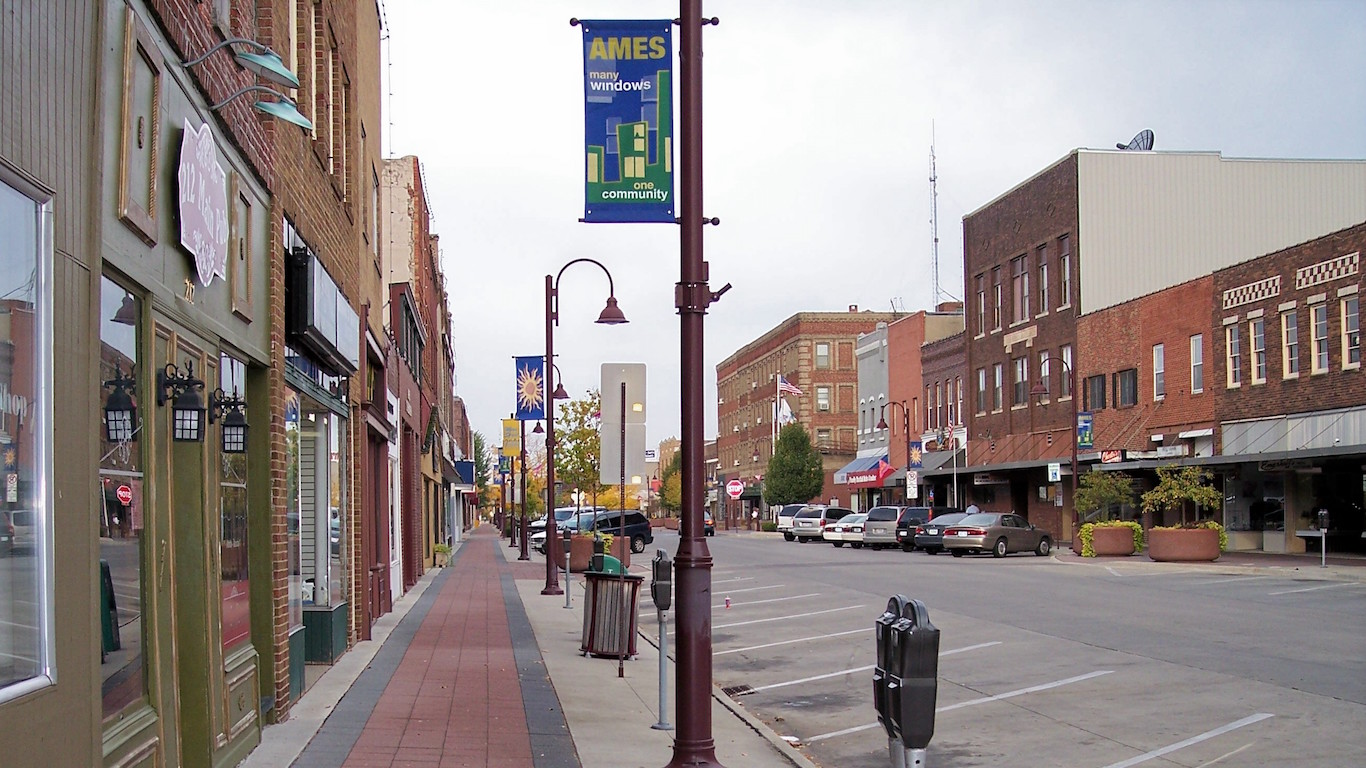
15. Ames, Iowa
> Premature death rate: 214.3 (per 100,000 residents)
> Adult obesity rate: 25.6%
> Adults without health insurance: 5.9%
> Median household income: $51,270
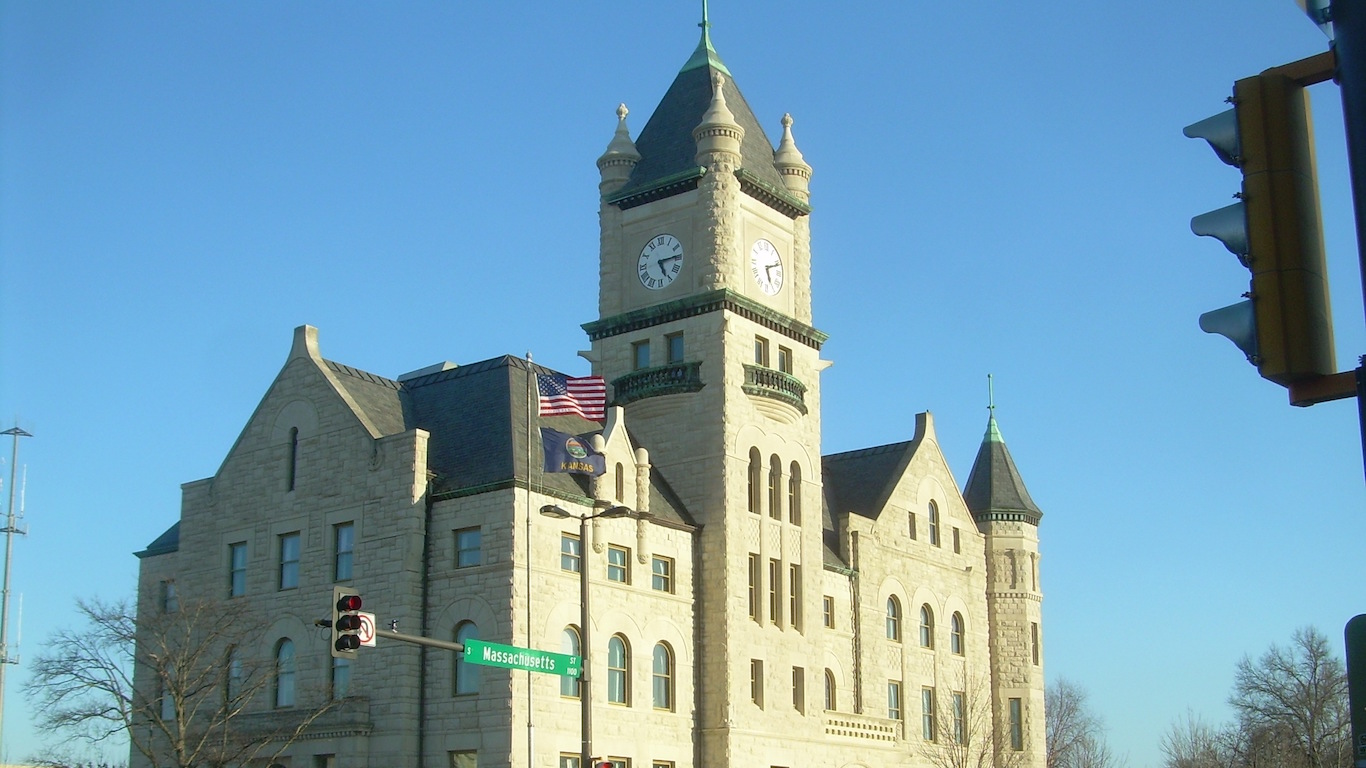
16. Lawrence, Kansas
> Premature death rate: 269.9 (per 100,000 residents)
> Adult obesity rate: 23.3%
> Adults without health insurance: 9.2%
> Median household income: $50,732
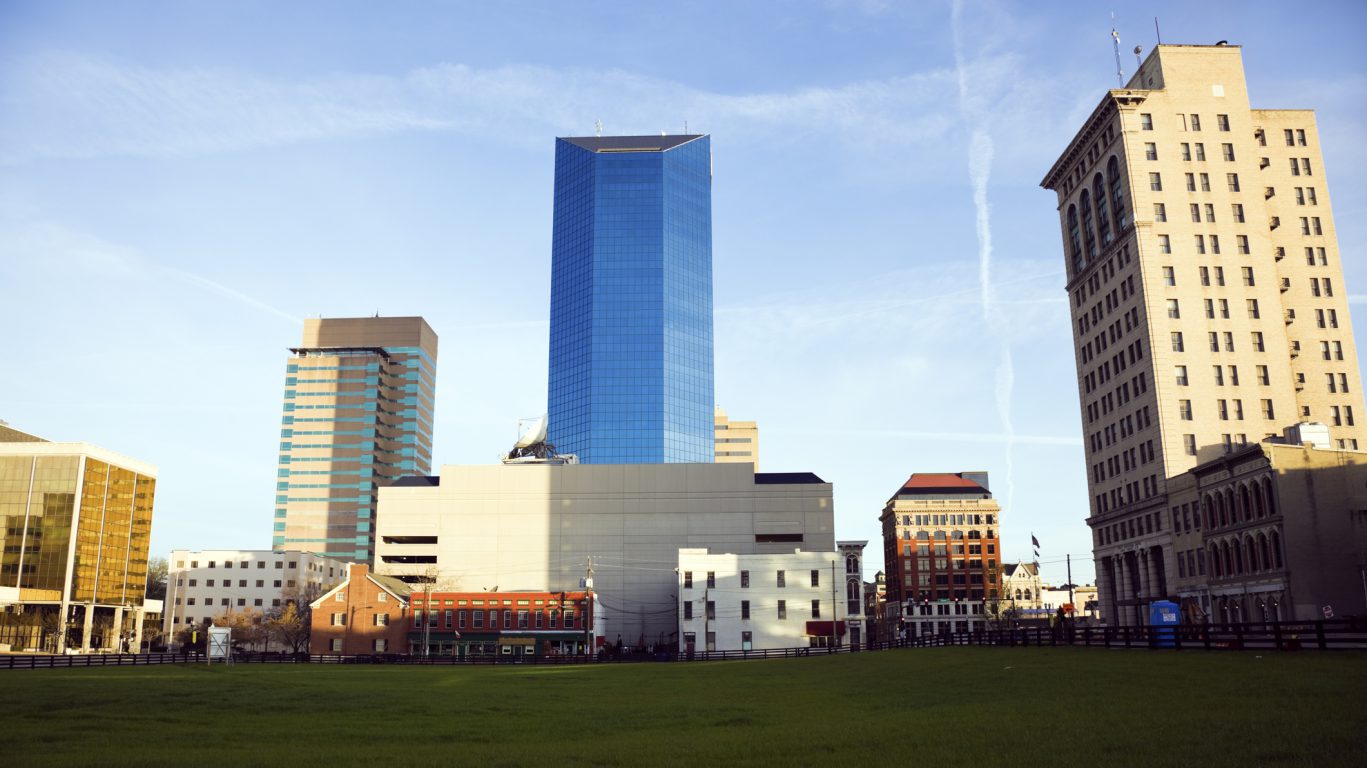
17. Lexington-Fayette, Kentucky
> Premature death rate: 358.7 (per 100,000 residents)
> Adult obesity rate: 28.2%
> Adults without health insurance: 9.6%
> Median household income: $49,997
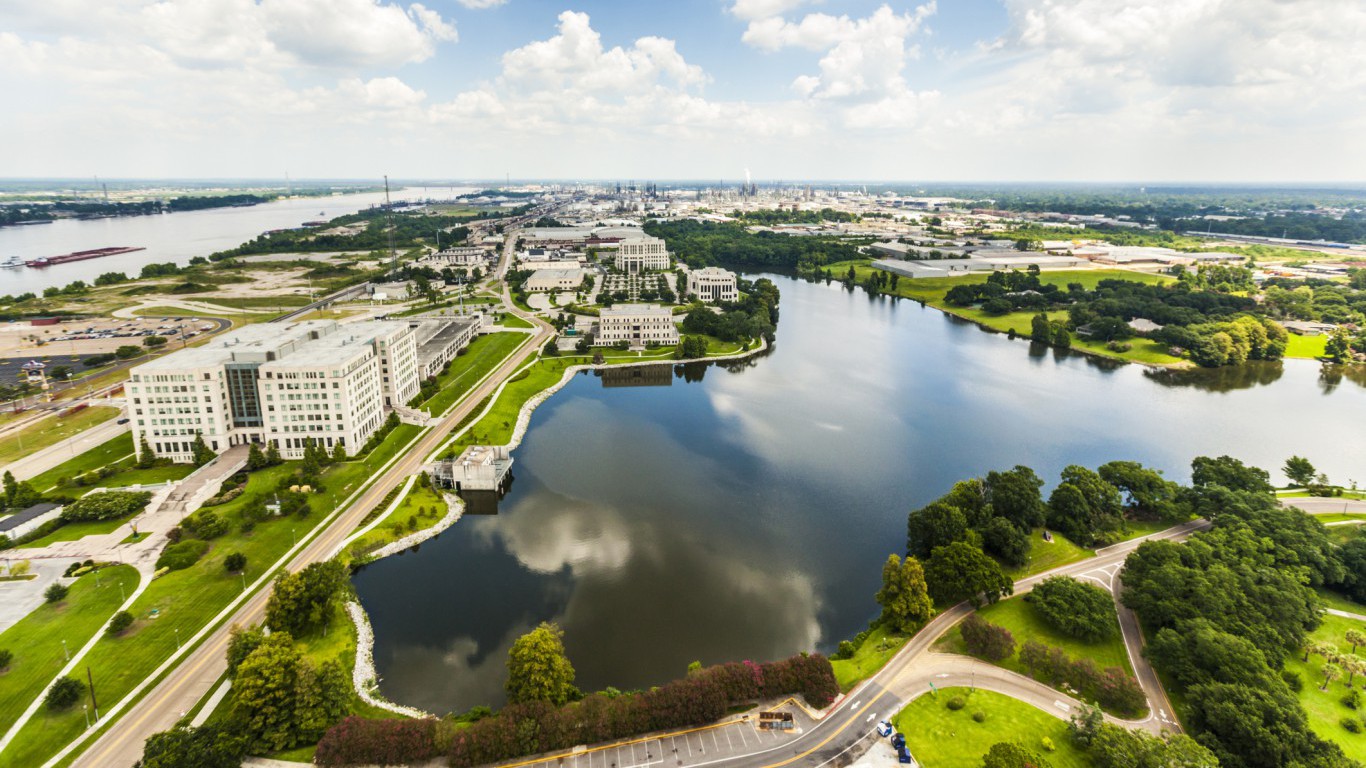
18. Baton Rouge, Louisiana
> Premature death rate: 431.1 (per 100,000 residents)
> Adult obesity rate: 33.9%
> Adults without health insurance: 13.3%
> Median household income: $51,829

19. Portland-South Portland, Maine
> Premature death rate: 274.6 (per 100,000 residents)
> Adult obesity rate: 24.1%
> Adults without health insurance: 8.3%
> Median household income: $58,000

20. California-Lexington Park, Maryland
> Premature death rate: 319.0 (per 100,000 residents)
> Adult obesity rate: 30.3%
> Adults without health insurance: 5.6%
> Median household income: $88,190

21. Barnstable Town, Massachusetts
> Premature death rate: 270.1 (per 100,000 residents)
> Adult obesity rate: 19.7%
> Adults without health insurance: 3.2%
> Median household income: $61,597
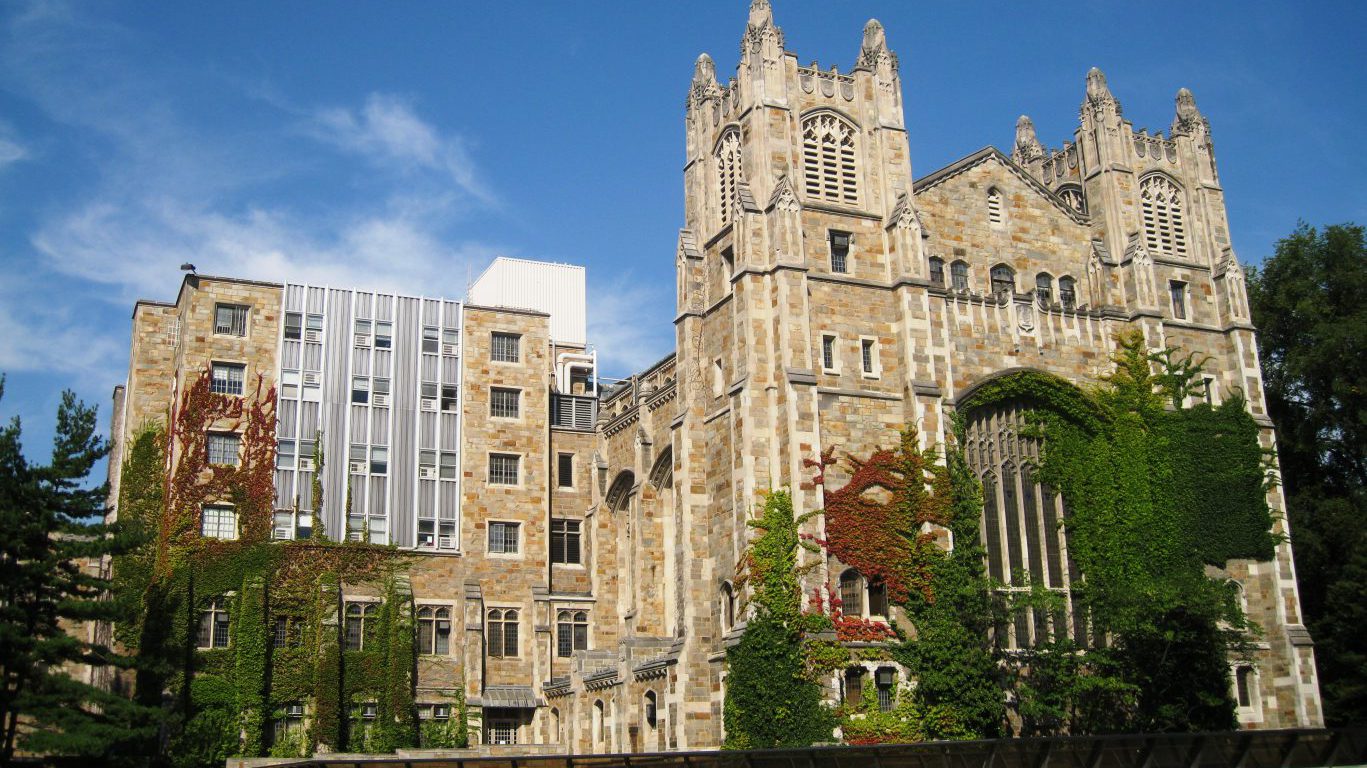
22. Ann Arbor, Michigan
> Premature death rate: 254.8 (per 100,000 residents)
> Adult obesity rate: 23.3%
> Adults without health insurance: 5.7%
> Median household income: $60,805
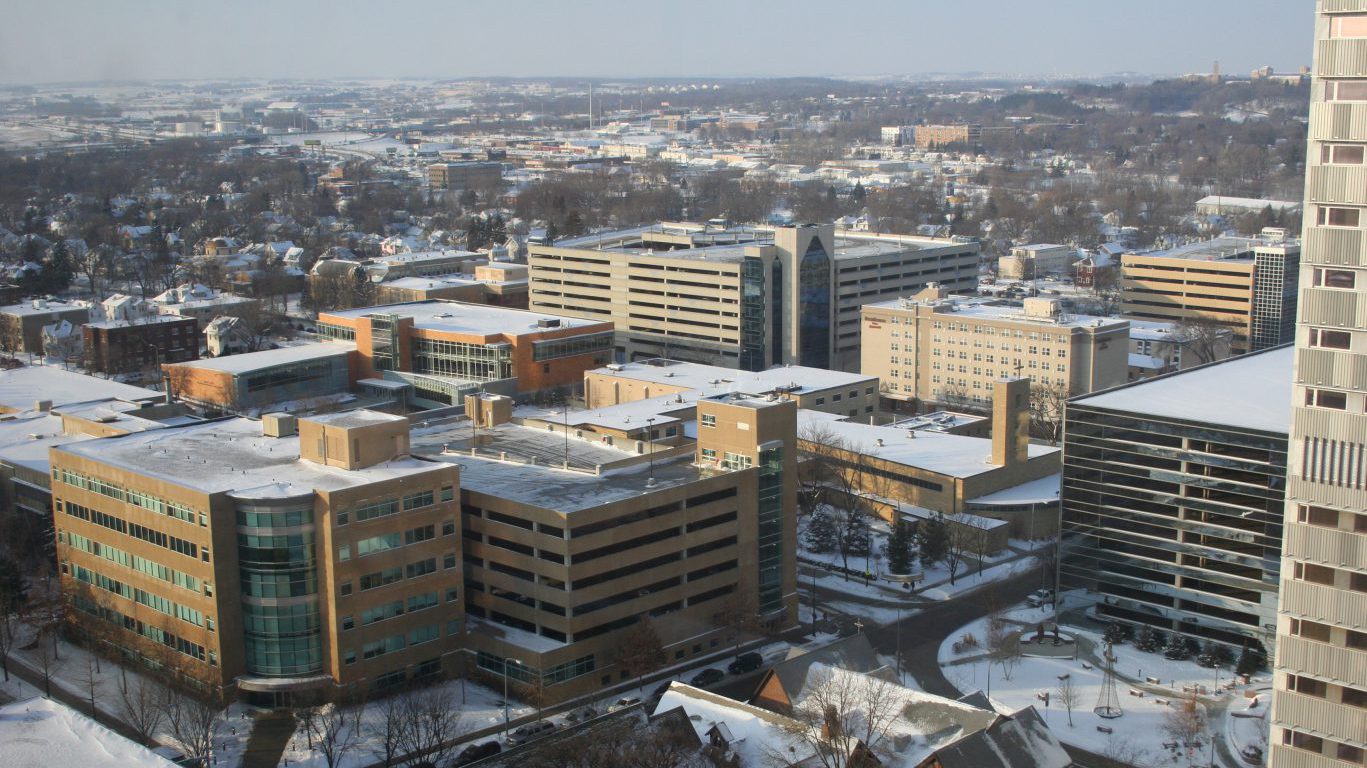
23. Rochester, Minnesota
> Premature death rate: 229.7 (per 100,000 residents)
> Adult obesity rate: 25.1%
> Adults without health insurance: 5.4%
> Median household income: $64,210

24. Gulfport-Biloxi-Pascagoula, Mississippi
> Premature death rate: 459.4 (per 100,000 residents)
> Adult obesity rate: 32.0%
> Adults without health insurance: 17.3%
> Median household income: $44,826

25. Columbia, Missouri
> Premature death rate: 304.2 (per 100,000 residents)
> Adult obesity rate: 27.3%
> Adults without health insurance: 7.6%
> Median household income: $49,059

26. Missoula, Montana
> Premature death rate: 285.2 (per 100,000 residents)
> Adult obesity rate: 21.4%
> Adults without health insurance: 11.4%
> Median household income: $47,029

27. Lincoln, Nebraska
> Premature death rate: 269.7 (per 100,000 residents)
> Adult obesity rate: 26.3%
> Adults without health insurance: 8.8%
> Median household income: $52,291
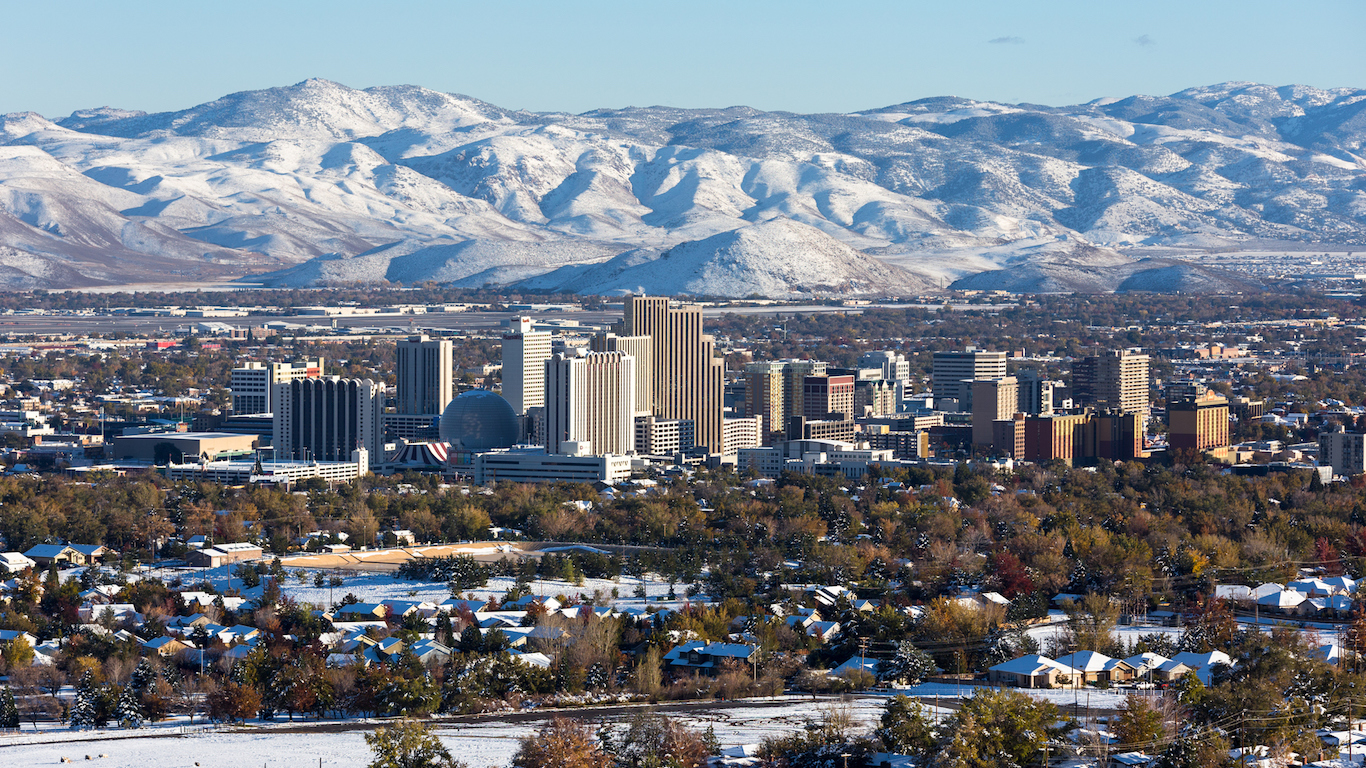
28. Reno, Nevada
> Premature death rate: 357.6 (per 100,000 residents)
> Adult obesity rate: 22.2%
> Adults without health insurance: 12.6%
> Median household income: $53,047

29. Manchester-Nashua, New Hampshire
> Premature death rate: 279.4 (per 100,000 residents)
> Adult obesity rate: 27.3%
> Adults without health insurance: 8.3%
> Median household income: $70,906
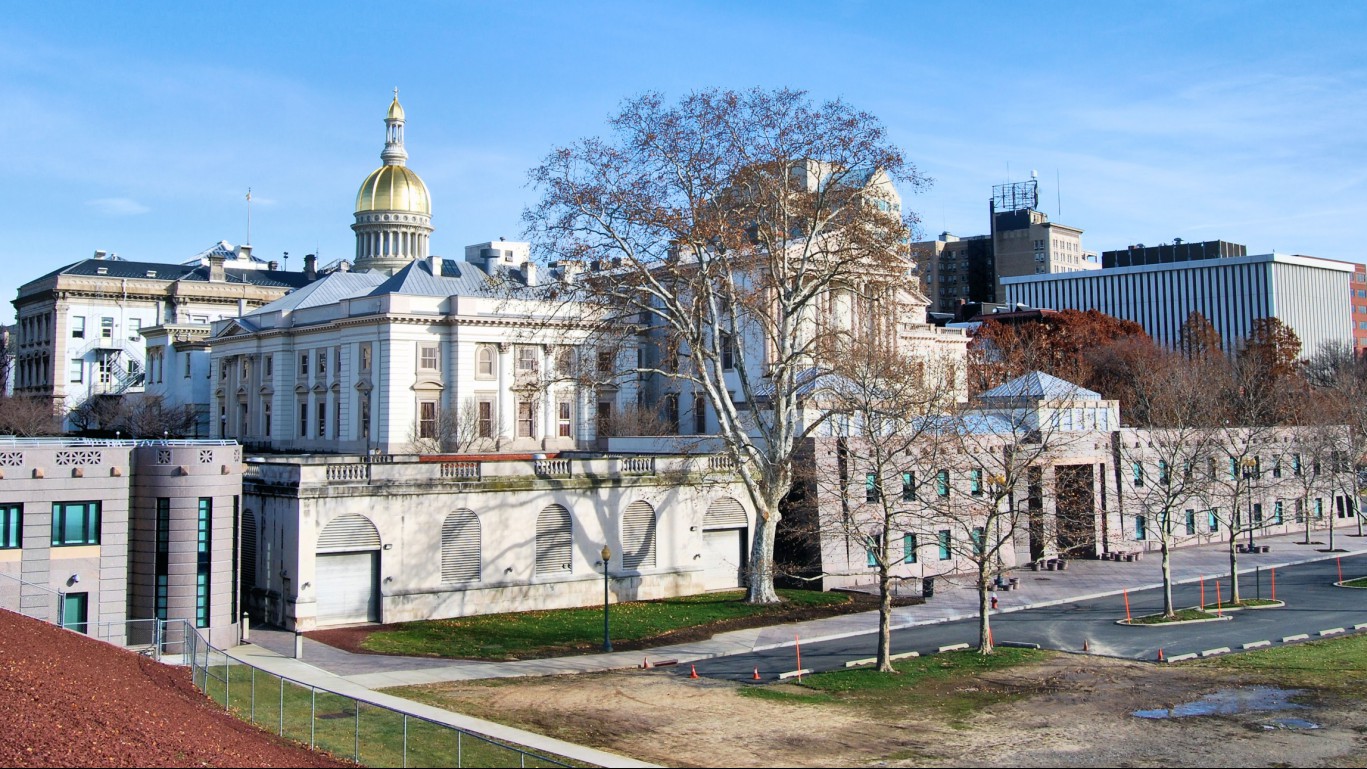
30. Trenton, New Jersey
> Premature death rate: 298.0 (per 100,000 residents)
> Adult obesity rate: 24.3%
> Adults without health insurance: 10.0%
> Median household income: $74,118

31. Santa Fe, New Mexico
> Premature death rate: 293.7 (per 100,000 residents)
> Adult obesity rate: 13.8%
> Adults without health insurance: 16.6%
> Median household income: $52,958

32. Ithaca, New York
> Premature death rate: 269.4 (per 100,000 residents)
> Adult obesity rate: 23.7%
> Adults without health insurance: 4.6%
> Median household income: $52,836
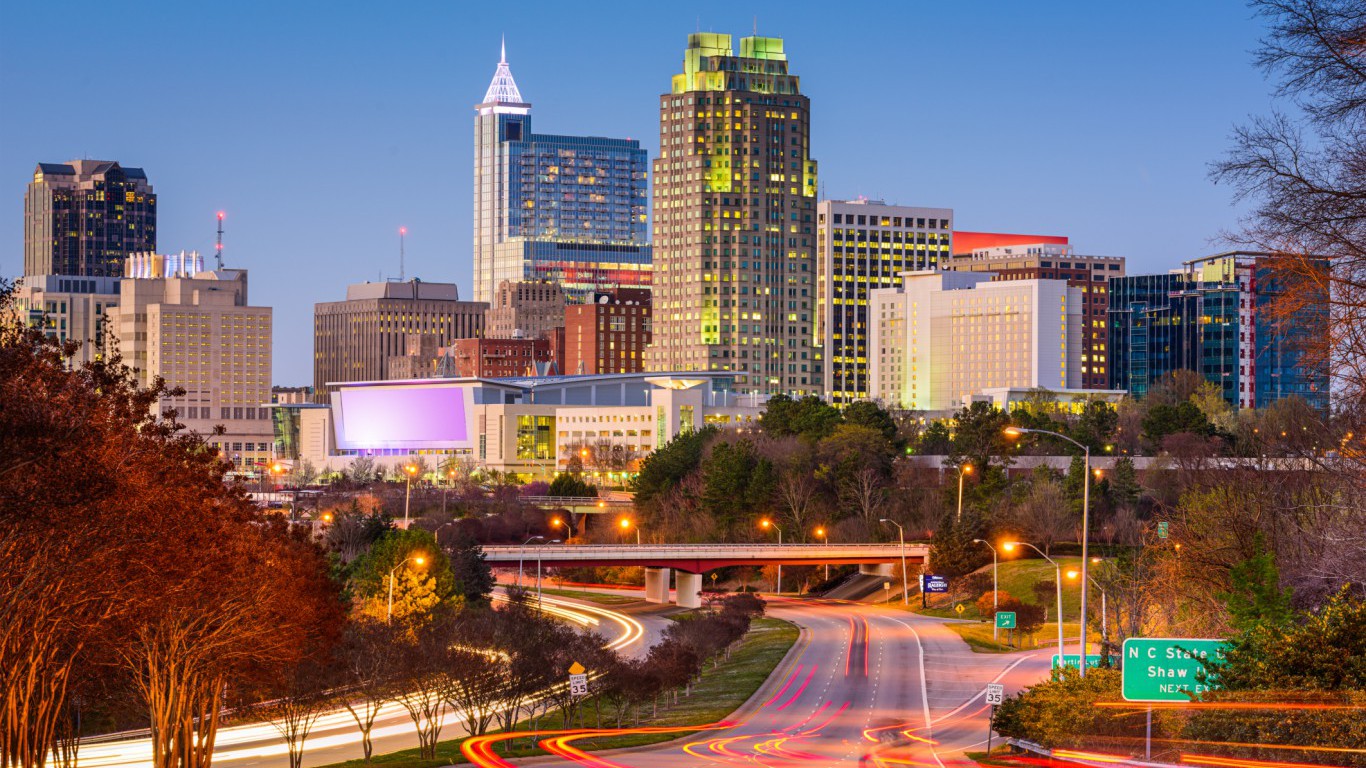
33. Raleigh, North Carolina
> Premature death rate: 285.4 (per 100,000 residents)
> Adult obesity rate: 26.8%
> Adults without health insurance: 11.8%
> Median household income: $62,794

34. Fargo, North Dakota
> Premature death rate: 280.0 (per 100,000 residents)
> Adult obesity rate: 27.5%
> Adults without health insurance: 6.7%
> Median household income: $53,634

35. Columbus, Ohio
> Premature death rate: 365.5 (per 100,000 residents)
> Adult obesity rate: 29.8%
> Adults without health insurance: 8.5%
> Median household income: $55,115
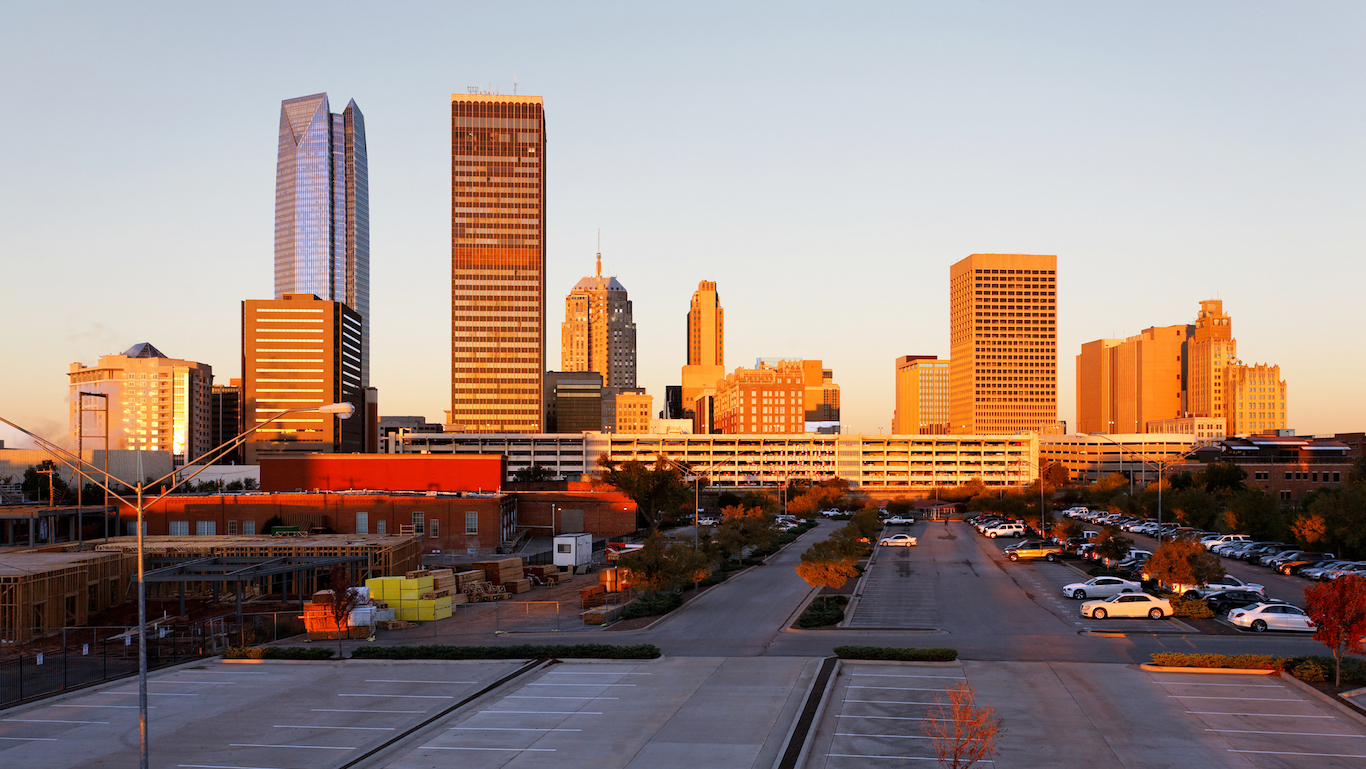
36. Oklahoma City, Oklahoma
> Premature death rate: 427.0 (per 100,000 residents)
> Adult obesity rate: 30.8%
> Adults without health insurance: 14.0%
> Median household income: $50,967
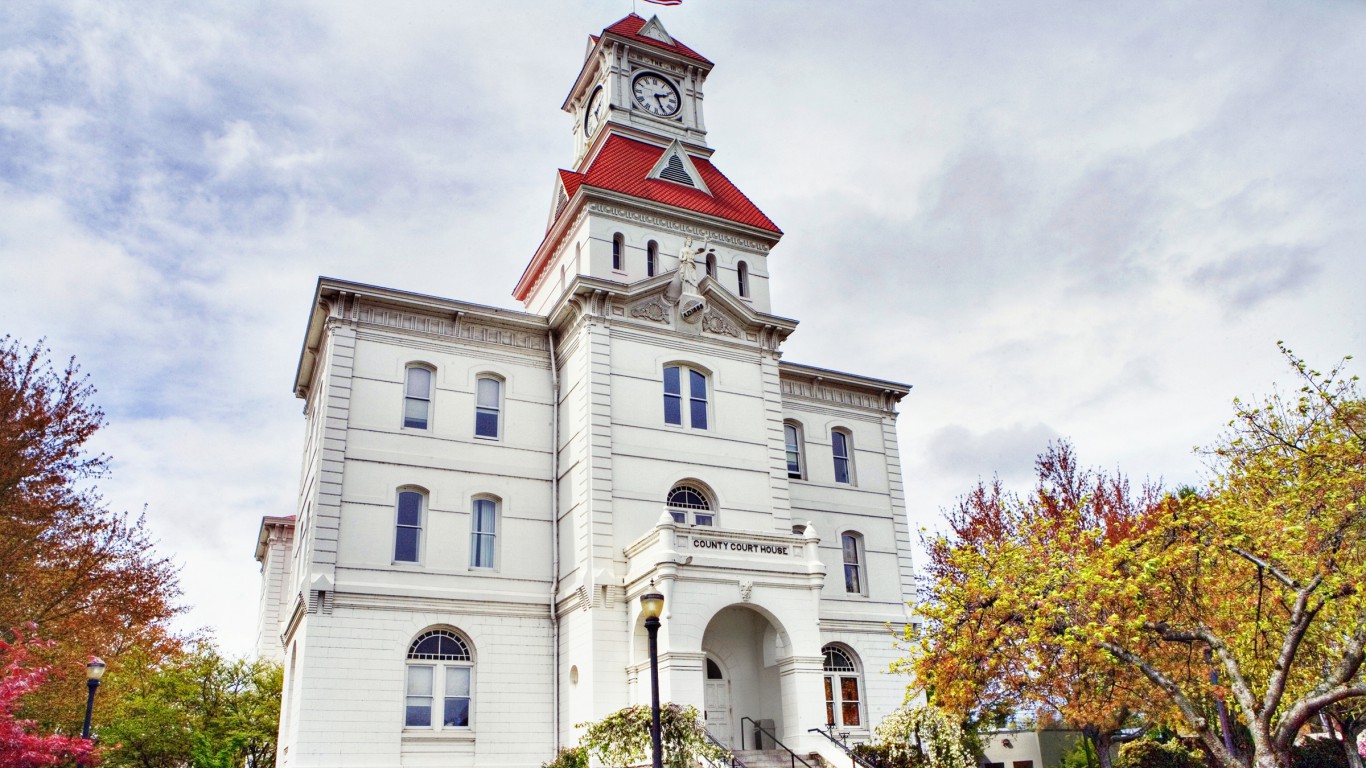
37. Corvallis, Oregon
> Premature death rate: 228.7 (per 100,000 residents)
> Adult obesity rate: 19.7%
> Adults without health insurance: 7.6%
> Median household income: $49,338
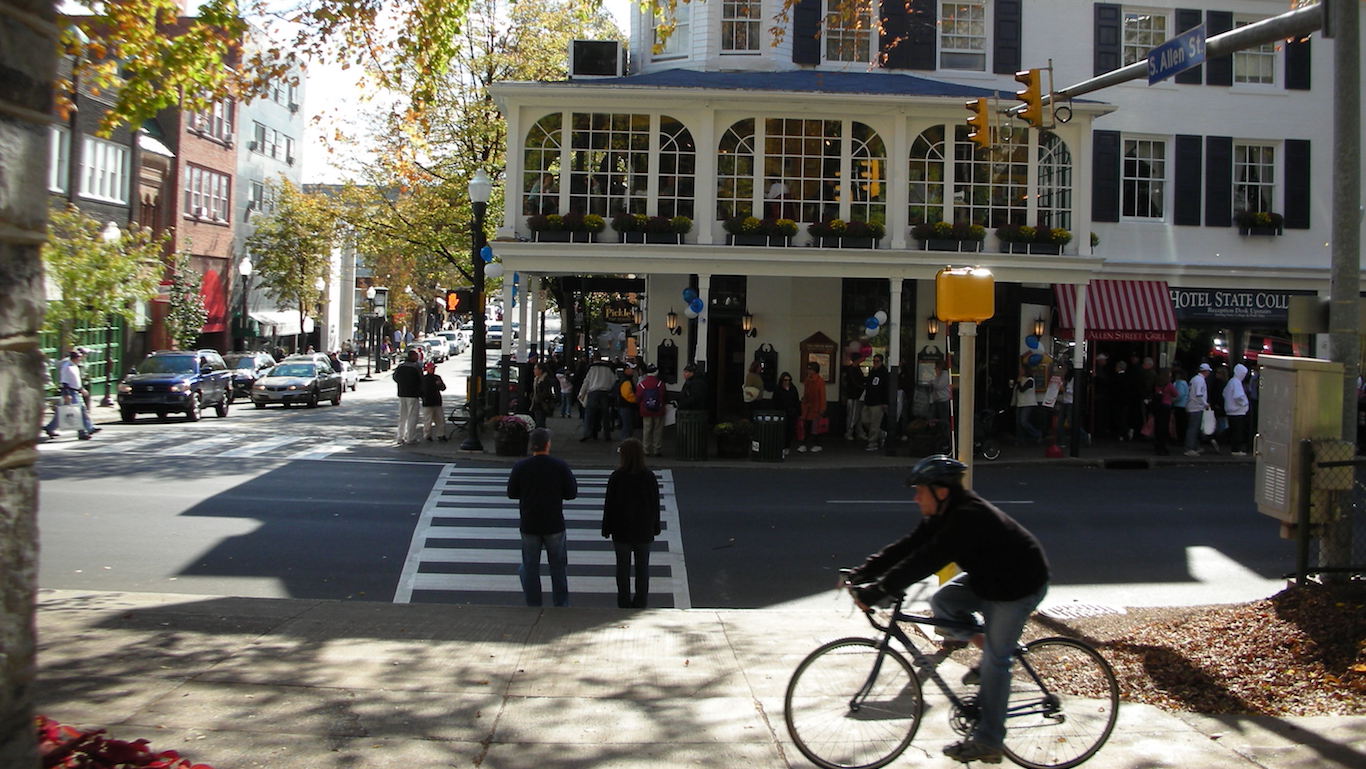
38. State College, Pennsylvania
> Premature death rate: 230.6 (per 100,000 residents)
> Adult obesity rate: 25.3%
> Adults without health insurance: 5.7%
> Median household income: $50,295

39. Providence-Warwick, Rhode Island
> Premature death rate: 309.9 (per 100,000 residents)
> Adult obesity rate: 27.0%
> Adults without health insurance: 6.1%
> Median household income: $56,267
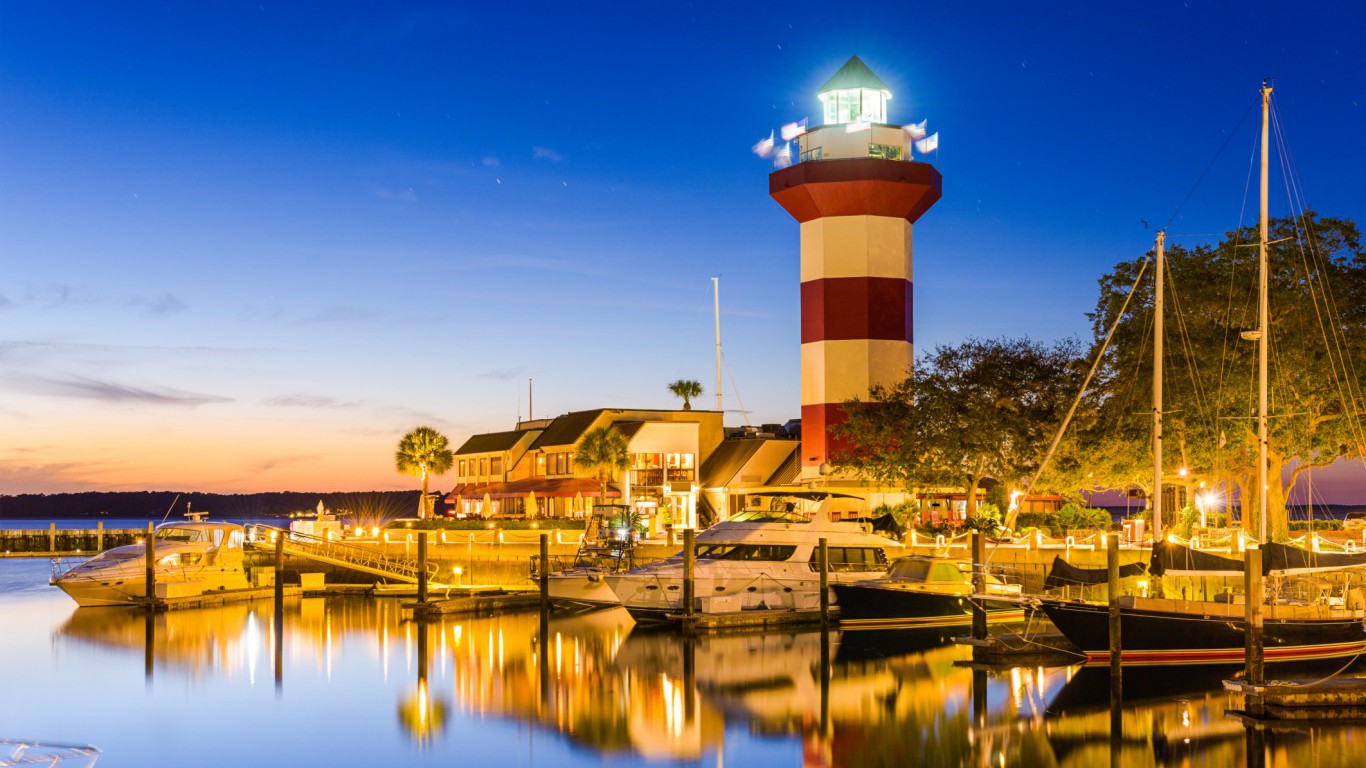
40. Hilton Head Island-Bluffton-Beaufort, South Carolina
> Premature death rate: 283.7 (per 100,000 residents)
> Adult obesity rate: 24.6%
> Adults without health insurance: 13.5%
> Median household income: $53,863

41. Sioux Falls, South Dakota
> Premature death rate: 308.2 (per 100,000 residents)
> Adult obesity rate: 28.1%
> Adults without health insurance: 6.5%
> Median household income: $57,356

42. Nashville-Davidson–Murfreesboro–Franklin, Tennessee
> Premature death rate: 388.0 (per 100,000 residents)
> Adult obesity rate: 32.0%
> Adults without health insurance: 11.9%
> Median household income: $52,805
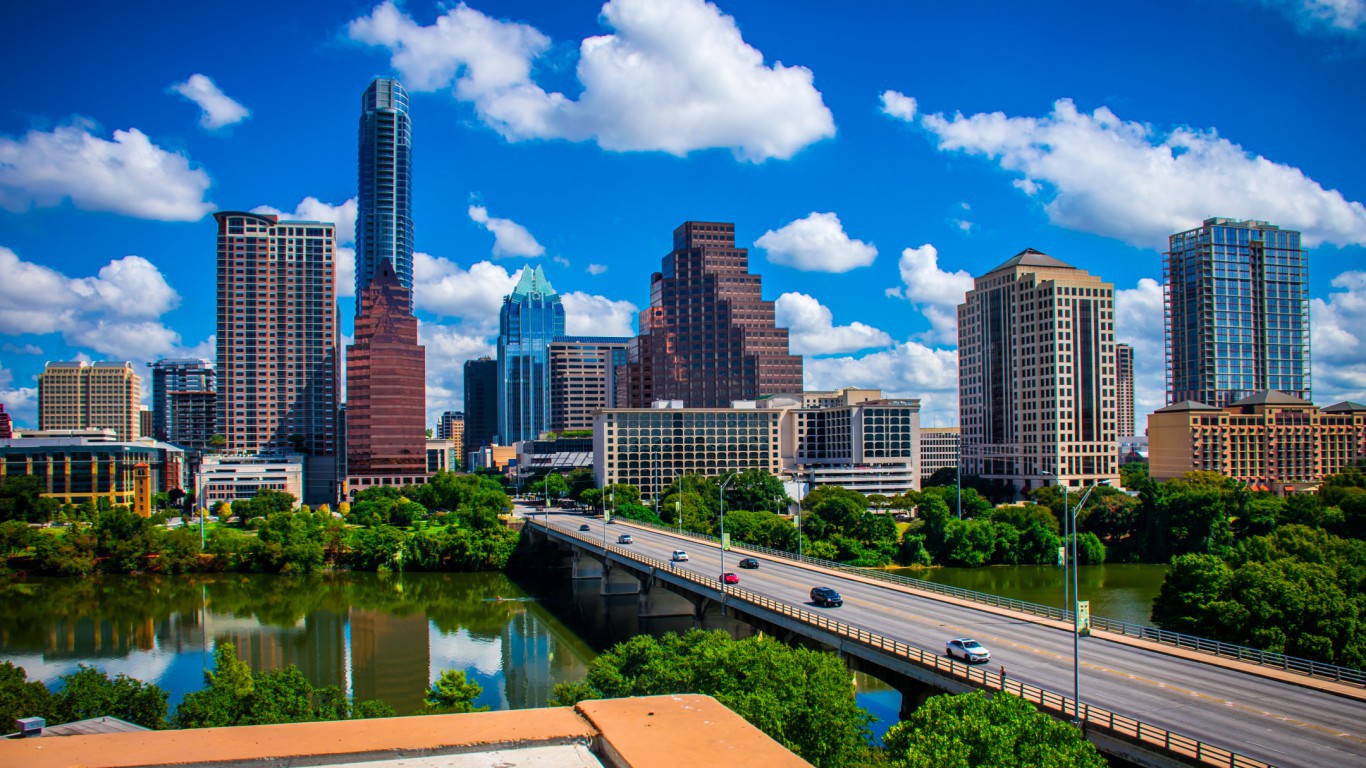
43. Austin-Round Rock, Texas
> Premature death rate: 259.4 (per 100,000 residents)
> Adult obesity rate: 23.3%
> Adults without health insurance: 15.5%
> Median household income: $61,900

44. Provo-Orem, Utah
> Premature death rate: 250.6 (per 100,000 residents)
> Adult obesity rate: 23.3%
> Adults without health insurance: 10.8%
> Median household income: $60,647

45. Burlington-South Burlington, Vermont
> Premature death rate: 265.2 (per 100,000 residents)
> Adult obesity rate: 22.7%
> Adults without health insurance: 4.0%
> Median household income: $62,175

46. Charlottesville, Virginia
> Premature death rate: 289.9 (per 100,000 residents)
> Adult obesity rate: 25.8%
> Adults without health insurance: 11.7%
> Median household income: $59,189

47. Seattle-Tacoma-Bellevue, Washington
> Premature death rate: 272.5 (per 100,000 residents)
> Adult obesity rate: 25.5%
> Adults without health insurance: 8.3%
> Median household income: $68,969

48. Morgantown, West Virginia
> Premature death rate: 355.9 (per 100,000 residents)
> Adult obesity rate: 29.5%
> Adults without health insurance: 7.9%
> Median household income: $46,028
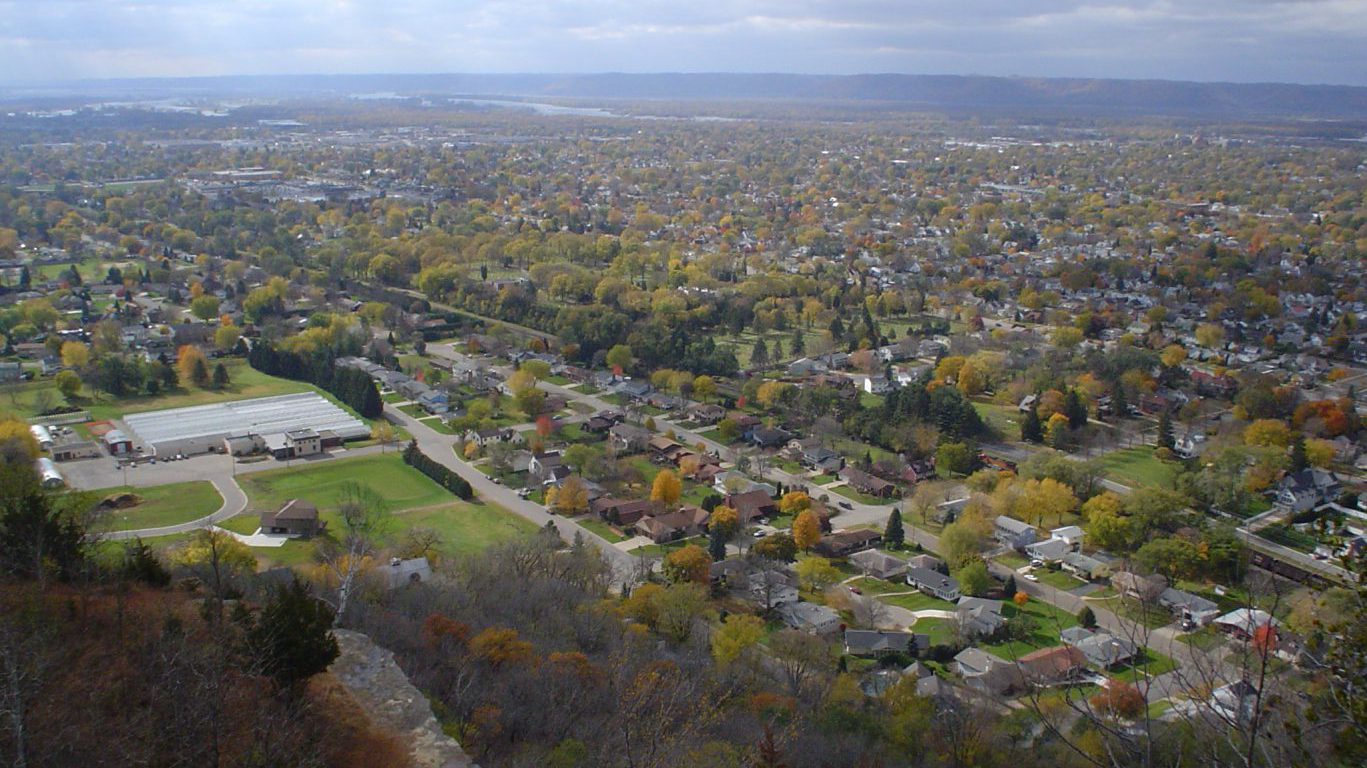
49. La Crosse-Onalaska, Wisconsin
> Premature death rate: 273.4 (per 100,000 residents)
> Adult obesity rate: 25.2%
> Adults without health insurance: 5.4%
> Median household income: $51,160

50. Cheyenne, Wyoming
> Premature death rate: 339.0 (per 100,000 residents)
> Adult obesity rate: 28.2%
> Adults without health insurance: 9.2%
> Median household income: $58,324
100 Million Americans Are Missing This Crucial Retirement Tool
The thought of burdening your family with a financial disaster is most Americans’ nightmare. However, recent studies show that over 100 million Americans still don’t have proper life insurance in the event they pass away.
Life insurance can bring peace of mind – ensuring your loved ones are safeguarded against unforeseen expenses and debts. With premiums often lower than expected and a variety of plans tailored to different life stages and health conditions, securing a policy is more accessible than ever.
A quick, no-obligation quote can provide valuable insight into what’s available and what might best suit your family’s needs. Life insurance is a simple step you can take today to help secure peace of mind for your loved ones tomorrow.
Click here to learn how to get a quote in just a few minutes.
Thank you for reading! Have some feedback for us?
Contact the 24/7 Wall St. editorial team.
 24/7 Wall St.
24/7 Wall St. 24/7 Wall St.
24/7 Wall St. 24/7 Wall St.
24/7 Wall St.


